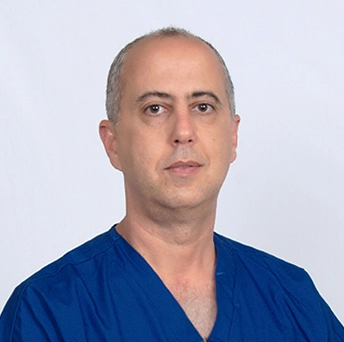Transformative Facial Asymmetry Fix: Dr. Dahabra’s 3D Mapping & MD Code Precision
Introduction to Facial Asymmetry & Dr. Dahabra’s Unique Approach
Facial Asymmetry—when one side of the face isn’t a perfect mirror of the other—is surprisingly common. This article concerns the breakthrough facial asymmetry treatment: Dr. Dahabra’s precision mapping & MD Codes expertise.
Genetics, trauma, or medical conditions like Bell’s palsy can disrupt that mirror image. Treatment options range from Botox or dental adjustments to surgery such as rhinoplasty or orthognathic correction.
The key?
Tailoring the approach to each person’s unique anatomy and goals.
Dr. Dahabra combines two powerful tools: 3D Facial Mapping and MD Code Precision.
Mapping reveals uneven face cheeks or jaw contours with objective clarity. MD Code Precision then uses targeted injectable techniques that respect the golden ratio to restore balance.
This method bridges diagnostic accuracy with sculpting finesse for those frustrated by past failed fixes.
The result?
A deeply personalized facial asymmetry treatment that addresses root causes while harmonizing facial features.
Whether correcting uneven face cheeks or recalibrating jawline volume, Dr. Dahabra’s approach represents a next-generation facial asymmetry fix grounded in evidence and artistry.
Table of Contents
1. Types of Facial Asymmetry: From Skeletal to Soft Tissue
2. Facial Asymmetry Causes: Genetics, Trauma & Beyond
3. Non‑Surgical Nose Job: Precision Without Surgery
4. Non‑Surgical Jaw Lift (Jowl Lift/Lower Facelift)
5. 3D Facial Mapping: Objective & Personalized Diagnosis
6. MD Code Precision: Targeted Injectable Strategy
7. Golden Ratio: Guiding Aesthetic Harmony
8. Botox as a Non‑Surgical Treatment Option
9. Dermal Fillers: Juvederm, Restylane, RHA, Sculptra
10. Skin Resurfacing for Texture & Symmetry
11. Facial Asymmetry Correction: Before & After Strategies
12. Facial Asymmetry Fix: Combining Modalities for Best Results
13. Consult with a Qualified Professional: Ensuring Safe Outcomes
14. Recovery & Maintenance: Maximizing Long-Term Success
15. Frequently Asked Questions (FAQs)
16. Conclusion
17. References
1. Types of Facial Asymmetry: From Skeletal to Soft Tissue
Facial Asymmetry divides into skeletal (bone structure), soft tissue (fat/muscle), and functional (muscle use differences).
Skeletal Asymmetry might be a tilted jaw or uneven cheekbones, often linked to trauma or dental misalignment. Soft tissue asymmetry arises from uneven fat loss, muscle mass, or skin elasticity and can develop with aging or facial habits.
Functional Asymmetry includes uneven smiles or speech patterns due to muscle overuse, sometimes from Bell’s palsy.
Knowing the type is key. Skeletal issues often need orthognathic surgery, while soft tissue imbalances respond well to dermal fillers, Botox, or jowl lifts. Functional Asymmetry sometimes improves with muscle-relaxing treatments or physical therapy.
Dr. Dahabra’s diagnostic 3D Facial Mapping and MD Code Precision let him target each asymmetry type accurately, ensuring volumetric filler goes exactly where needed—whether on bone or soft tissue—for dramatic yet natural-looking shifts.
2. Facial Asymmetry Causes: Genetics, Trauma & Beyond
Genetic predisposition is a significant factor in facial Asymmetry. One side may develop slightly differently before birth—subtle enough to go unnoticed until highlighted by lighting or aging.
Trauma, like fractures or childhood accidents, can shift bone growth and muscle positioning. Dental issues, such as misaligned bites or missing teeth, exert uneven pressure and cause gradual Asymmetry.
Neurological conditions, including Bell’s palsy, weaken muscles on one side, leading to rolling expression changes.
Less obvious—chronic habits like chewing on one side, persistent poor posture, or stress can subtly shift muscle or bone alignment. Over time, these habits contribute to uneven face cheeks, jawline differences, or chin deviation.
For an accurate assessment, Dr. Dahabra’s approach looks for signs of each cause in the diagnostic phase. The combined use of 3D Facial Mapping and MD Code Precision clarifies the root—structural or functional—guiding toward the correct facial asymmetry correction.
3. Non‑Surgical Nose Job: Precision Without Surgery
Did you know rhinoplasty can be mimicked non-surgically?
The non-surgical nose job uses dermal fillers to camouflage minor bumps, lift a drooping tip, or subtly straighten a deviated bridge.
Injectables are placed precisely—often using MD Code techniques—along the nasal dorsum, tip, or columella to adjust the light-reflecting angles. Results show up immediately, with minimal swelling and nearly no downtime.
It’s especially effective for symmetry issues caused by soft tissue differences—think mild unevenness, not structural bone deviations. For more major deviations, it can still improve contour and feed into surgical planning as a preview of change.
4. Non‑Surgical Jaw Lift (Jowl Lift/Lower Facelift)
Sagging jowls and a misaligned jawline commonly make faces appear uneven. Non-surgical jaw lifts use fillers or PDO threads to support the lower face, tighten skin, and enhance the jawline’s natural angle.
Fillers are strategically placed in the pre-jowl sulcus, chin, and jaw angle to restore the golden ratio proportions. This lifts jowls into smoother, more balanced contours while reducing marionette lines.
The result?
A sharper lower face and more symmetrical jawline that supports facial harmony. This facial asymmetry fix can postpone or replace facelift surgery for mild-to-moderate volume loss.
5. 3D Facial Mapping: Objective & Personalized Diagnosis
A critical tool in Dr. Dahabra’s diagnostic arsenal, 3D Facial Mapping uses scanners to create a detailed 3D image of the face. Unlike 2D photos, this shows actual spatial deviations—like how much one cheek is lower or how far the chin deviates.
Studies such as one in Heliyon reveal that 3D mapping accurately detects even 2 mm asymmetries, enabling precision diagnosis. Another review confirms that 3D mapping provides more accurate and reliable measurements than 2D analysis.
With this analysis, Dr. Dahabra can set a precise baseline and track changes post-treatment—ensuring the facial asymmetry fix is visible and measurable.
6. MD Code Precision: Targeted Injectable Strategy
Developed by Dr. Maurício de Maio, the MD Codes system identifies key facial injection sites to improve structure and expression. It guides injectors to treat volume deficits with surgical-level accuracy.
For facial asymmetry correction, MD Codes allow for highly strategic balancing: adding volume on weaker regions, refining angles to restore symmetry, aligning with golden ratio ideals, and harmonizing left and right features.
This systematic, code-based approach ensures every facial asymmetry treatment is personalized to the patient’s bone and soft-tissue architecture—minimizing over- or under-treatment and maximizing natural harmony.
7. Golden Ratio: Guiding Aesthetic Harmony
The golden ratio (approximately 1:1.618) has been admired in art and nature for centuries.
In facial aesthetics, proportions such as the ideal cheek-to-chin distance, eye width, and mouth width follow this theory.
Dr. Dahabra incorporates the golden ratio into his analysis: does one cheek sit further from the center?
Are the lower-bone angles proportional?
Using golden-ratio guidelines helps ensure each correction—from chin projection to nasal alignment—is harmonious and beauty-enhancing.
Dr. Dahabra can quantify deviations and guide filler or Botox placements toward more balanced, appealing outcomes by mapping Asymmetry using golden ratio benchmarks.
8. Botox as a Non‑Surgical Treatment Option
Botox does more than smooth lines—it can relax overactive muscles, accentuating facial Asymmetry. For conditions like Bell’s palsy, Botox helps equalize expressions by reducing muscle dominance on one side.
In aesthetic Asymmetry, Botox can soften stronger muscle groups—like masseter hypertrophy or brow elevation—reducing the dynamic pull on one side to improve symmetry and bring restfulness to expression.
When combined with fillers (via MD Codes), Botox achieves a powerful one-two punch: volume balance plus muscle equilibrium, delivering a precise and expressive result.
9. Dermal Fillers: Juvederm, Restylane, RHA, Sculptra
Dermal fillers address volume loss and structural Asymmetry efficiently:
- Juvederm & Restylane (hyaluronic acid): Great for fine contouring around the nose, cheeks, chin, or jawline, with immediate results lasting 6–18 months.
- RHA fillers: Flexible fillers that move with facial expressions, ideal for dynamic areas.
- Sculptra: Stimulates collagen over time for deeper volume restoration.
- Each filler aligns with MD Code injection strategies to sculpt, lift, or fill volume-deficient zones. Before-and-after comparisons highlight facial asymmetry correction—especially in cheeks, jawlines, and nasolabial areas.
10. Skin Resurfacing for Texture & Symmetry
Surface irregularities—uneven tone or fine lines—can accentuate volume deviations. Treatments like microneedling, chemical peels, or laser resurfacing help smooth skin, support collagen, and unify tone.
By enhancing skin texture, these modalities complement structural corrections and make facial Asymmetry fix effects more pronounced. For example, a laser peel can tighten slight laxity post-jaw lift, helping the lower face look sharper and more symmetrical.
11. Facial Asymmetry Correction: Before & After Strategies
Before-and-after photos are potent tools to document progress and patient satisfaction. Dr. Dahabra uses standardized lighting, head positioning, and 3D scans to demonstrate fundamental changes.
Before treatment, 3D landmarks and color-coded asymmetry maps highlight deviations. After treatment, new scanning shows improved symmetry—cheek volume matches, jowls lifted, nose straighter.
These visual benchmarks help patients understand how their facial asymmetry fix progressed—from unhealthy to harmonious—and how adjustments fine-tuned results.
12. Facial Asymmetry Fix: Combining Modalities for Best Results
For resilient Asymmetry, combined treatments often work best: fillers for volume, Botox for muscle relaxation, and microneedling for texture.
This multi-modal layering allows for fine-tuned corrections—supporting cheeks, lifting jowls, balancing bite angle, and evening tone—often avoiding surgical intervention.
Dr. Dahabra encourages a holistic plan: diagnosing with 3D mapping, planning with MD Codes, and treating with injectables and skin resurfacing. The result is a coordinated “facial asymmetry fix” that feels cohesive, natural, and long-lasting.
13. Consult with a Qualified Professional: Ensuring Safe Outcomes
With so many techniques at play, finding a skilled injector is crucial. Mistakes in placement or dose can cause new Asymmetry or compromise turns.
Dr. Dahabra’s credentials reflect a deep understanding of facial anatomy and structural and dynamic aesthetics. Consultation includes discussing causes (e.g., genetics, trauma), reviewing photos, examining bites, and mapping facial symmetry.
Collaborating with an expert ensures that even complex cases—like uneven face cheeks or skeletal imbalance—get assessed with diligence and corrected with precision.
14. Recovery & Maintenance: Maximizing Long-Term Success
Most non-surgical facial asymmetry fixes offer quick recovery—fillers and Botox involve little downtime, and resurfacing may cause mild peeling.
Long-term maintenance is key: Botox may need repetition every 3–4 months, hyaluronic acid fillers every 6–18 months, and Sculptra treatments spaced across years. Regular skin care sustains texture and elasticity.
Periodic 3D scans help monitor ongoing changes—especially age-related bone remodeling or soft tissue shifts—and guide minor revisions. Over time, a maintenance plan ensures initial symmetry gains are preserved and refined.
15. Frequently Asked Questions (FAQs) about Breakthrough Facial Asymmetry Treatment: Dr. Dahabra’s Precision Mapping & MD Codes Expertise
Q1. Can you fix facial Asymmetry?
Concise Answer: Many types of facial Asymmetry can be corrected using non‑surgical and surgical methods tailored to the cause.
Detailed Answer: Fixing facial Asymmetry depends on the root cause. Soft tissue volume loss or muscle imbalance often improves with fillers and Botox, while skeletal asymmetries may need orthognathic surgery.
Non-surgical options with 3D Facial Mapping and MD Code Precision, like Dr. Dahabra’s method, offer natural, measurable correction for many cases without surgery.
Q2. What is the cause of facial Asymmetry?
Concise Answer: Facial Asymmetry can stem from genetics, trauma, dental issues, neurological conditions, or habitual muscle use.
Detailed Answer: Genetics can pre-set uneven growth patterns; facial trauma or jaw fractures may shift bone alignment; dental misalignment exerts pressure; Bell’s palsy weakens muscles; repetitive habits like chewing on one side can exacerbate contours.
Identifying the cause is essential for adequate correction.
Q3. Is anyone’s face 100% symmetrical?
Concise Answer: Perfect facial symmetry is virtually nonexistent; minor Asymmetry is normal.
Detailed Answer: Most people have subtle differences in jaw angle, cheek volume, or eyebrow height—it’s part of natural human variability. Such minor Asymmetry isn’t noticeable unless highlighted by lighting or photo angle.
Cosmetic treatment seeks harmony, not perfection.
Q4. Is facial Asymmetry attractive?
Concise Answer: Facial Asymmetry can be attractive and add character, but significant imbalance may affect perceived harmony.
Detailed Answer: Studies show slight Asymmetry is common in attractive faces and can even enhance individuality. However, pronounced Asymmetry (over 4 mm in chin deviation, for instance) may distract from appearance.
Correction aims to restore natural proportion, not eliminate uniqueness.
Q5. What level of facial symmetry is considered the most attractive?
Concise Answer: Faces with 90–95% symmetry, following golden ratio guidelines, are generally perceived as most attractive.
Detailed Answer: Research shows people prefer faces where asymmetries are under 2 mm and facial proportions align with the golden ratio (~1:1.618). Dr. Dahabra’s 3D Facial Mapping quantifies imbalances, and MD Code Precision restores golden-ratio harmony in facial structure.
Q6. How do you improve facial symmetry?
Concise Answer: Use a combination of targeted fillers, Botox, skin resurfacing, and muscle balancing to achieve symmetry.
Detailed Answer: Begin with 3D Facial Mapping to assess structural vs. soft-tissue Asymmetry. Use MD Code Precision for filler placement, Botox for muscle imbalance, and resurfacing for texture.
Corrective dental work or minor surgical procedures may enhance long-term harmony.
Q7. How do you fix facial Asymmetry naturally?
Concise Answer: Non‑surgical methods like facial exercises, posture correction, and lifestyle changes may help mild asymmetries.
Detailed Answer: Improving posture, reducing stress, practicing balanced chewing, and doing facial exercises can help minor imbalances. However, moderate Asymmetry often needs professional tools like fillers or Botox—natural methods alone are usually ineffective for deeper structural issues.
Q8. Who treats facial Asymmetry?
Concise Answer: Board-certified plastic surgeons, dermatologists, and qualified aesthetic injectors specialize in treating facial Asymmetry.
Detailed Answer: Seek professionals with expertise in diagnostic anatomy and injection techniques. Providers trained in 3D Facial Mapping or MD Codes—like Dr. Dahabra—are best equipped to handle complex asymmetries accurately and safely.
Q9. What is the treatment of an asymmetrical face?
Concise Answer: Treatment may include Botox, dermal fillers, threads, resurfacing, or surgery based on severity and cause.
Detailed Answer: Botox and fillers guided by MD Code Precision can rebalance features in mild cases. Deeper issues may require orthognathic surgery. Skin resurfacing helps unify texture.
A multidisciplinary plan tailored through 3D mapping ensures each part contributes to overall symmetry.
Q10. What kind of procedure would help fix my face shape and Asymmetry?
Concise Answer: A personalized approach based on 3D mapping—often using fillers, Botox, and possibly threads or surgery—yields the best results.
Detailed Answer: Procedures vary greatly. Minor volume deficits respond to Juvederm or Restylane. Muscle imbalances improve with Botox. Skin laxity may be fixed with thread lifts.
Bone issues could require surgery. A diagnostic scan defines which procedures best meet your facial goals.
Q11. What is the best treatment for facial Asymmetry?
Concise Answer: The best treatment is tailored to your facial structure—usually combining fillers, Botox, and diagnostic mapping.
Detailed Answer: There’s no universal “best” fix; outcomes depend on cause and facial architecture. When guided by diagnostic tools like 3D mapping and executed with precision—such as MD Code Precision—treatment is optimized to balance cheeks, chin, jawline, and nose for natural symmetry.
Q12. Can you fix facial Asymmetry with facial exercises?
Concise Answer: Facial exercises may help with mild muscle tone but cannot correct structural Asymmetry.
Detailed Answer: While exercises can stimulate muscles and improve tone, they cannot alter bone or fat volume. Structural asymmetries—like uneven jawline—typically need injectables or surgery.
Muscle-focused approaches alone generally fall short of most noticeable Asymmetry.
Q13. Can an asymmetrical face be corrected?
Concise Answer: Yes—facial Asymmetry can be successfully corrected with the right mix of diagnostic and treatment tools.
Detailed Answer: Many patients see significant improvement using non-invasive tools like Botox, fillers, and skin treatments guided by diagnostic mapping. Even skeletal asymmetries can be improved or disguised, enhancing balance and easing concerns about past failed symmetry corrections.
Q14. Why does my face look asymmetrical in pictures but not in the mirror?
Concise Answer: Camera angles, lighting, and head tilt can distort facial proportions in photos.
Detailed Answer: Phones exaggerate perspective—especially close-up selfies—making noses and cheeks seem uneven. Lighting and slight head rotations also affect symmetry.
Consistent head positioning and professional lighting (as used in 3D mapping) help ensure photos reflect proper balance.
Q15. When is it too late to fix facial Asymmetry?
Concise Answer: It’s never too late—non‑surgical options can correct Asymmetry at any adult age, and maintenance helps preserve results.
Detailed Answer: As long as skin elasticity and bone structure remain, fillers and Botox can rebalance volume and muscle tone. Even with aging changes, MD Code Precision, and 3D mapping, adjustments can refresh facial harmony—often avoiding surgical procedures entirely.
16. Conclusion: Breakthrough Facial Asymmetry Treatment: Dr. Dahabra’s Precision Mapping & MD Codes Expertise
Dr. Dahabra’s approach to so-called “unfixable” facial Asymmetry is rooted in 3D Facial Mapping and MD Code Precision—two techniques that unlock hidden volumetric and structural anomalies often missed in standard assessments.
Using diagnostic scans to identify uneven face cheeks, jaw angles, chin position, and muscle activity, his method combines targeted injectable treatments—Botox, Juvederm, Restylane, RHA, Sculptra—alongside skin resurfacing and golden‑ratio guided planning.
The result is a multifaceted facial asymmetry correction that delivers measurable symmetry, balanced proportions, and enhanced aesthetics.
More than a quick fix, Dr. Dahabra’s model offers a long‑term solution. Through precise planning and customized maintenance, patients achieve a facial asymmetry fix that looks natural, feels enduring, and restores confidence where prior treatments fell short.
We have covered everything about breakthrough facial asymmetry treatment: Dr. Dahabra’s precision mapping & MD Codes expertise.
Breakthrough Facial Asymmetry Treatment: Precision Mapping & MD Codes Expertise with Dr. Dahabra
Discover the Breakthrough Facial Asymmetry Treatment: Precision Mapping & MD Codes Expertise with Dr. Dahabra. Why wait to unlock your beauty?
Call us now at (954) 595-2607 or book online. Your journey begins with just a click or a call.
Embrace the beauty, embrace innovation – Embrace You.
17. References
Beverly Hills Wellness Center & Med Spa, Florida
Considering Multi‑Axes Facial Rotation Asymmetry Patterns
Source: PMC / NCBI (National Center for Biotechnology Information)
Brief: Explores how inherent facial Asymmetry develops from birth and progresses with age, using multi-axis rotational analysis.
The perception of facial Asymmetry using 3‑dimensional simulated models
Source: PMC / NCBI
Brief: Investigates typical chin asymmetry thresholds people perceive as “normal” using 3D simulations.
Subjective evaluation of facial Asymmetry with three-dimensional imaging
Source: PMC / NCBI
Brief: Assesses individual sensitivity to facial discrepancies using 3D imaging and rating scales.
A Review of Three‑Dimensional Facial Asymmetry Analysis Methods
Source: Symmetry (MDPI)
Brief: A detailed review of 3D methods—landmarks, mirror–image analysis, masks, AI—for diagnosing facial Asymmetry.
Similarity index for intuitive assessment of three‑dimensional facial Asymmetry
Source: Scientific Reports (Nature)
Brief: Introduces a mirroring‑based similarity index to quantify mandibular Asymmetry before and after surgery intuitively.
Source: Maxillofacial Plastic and Reconstructive Surgery (SpringerOpen)
Brief: Studies correlations between 3D facial attractiveness assessments and classical proportional norms (including golden ratio) in a Hong Kong Chinese cohort.
Three‑dimensional assessment of facial Asymmetry in Class III patients
Source: Clinical Oral Investigations (SpringerLink)
Brief: Validates modified Procrustes analysis (a 3D alignment technique) for reliable assessment of facial Asymmetry in orthognathic surgery patients.
Automatic three‑dimensional facial symmetry reference plane using deep learning (FPRS‑Net)
Source: ScienceDirect
Brief: Describes a deep‑learning algorithm (FPRS‑Net) that automatically generates a facial symmetry reference plane, enhancing the efficiency and accuracy of asymmetry diagnosis.
Facial Asymmetry Detected with 3D Methods in Orthodontics: A Systematic Review
Source: The Open Dentistry Journal via ResearchGate
Brief: Compares 2D and 3D imaging methods (CBCT, stereophotogrammetry, laser scanning) in orthodontic facial asymmetry diagnosis.
A Quantified Study of Facial Asymmetry in 3D Faces
Source: Carnegie Mellon University Research Archive (CMU RI)
Brief: Quantitative analysis of facial Asymmetry across over 100 individuals via 3D surface data; examines statistical significance and implications.




